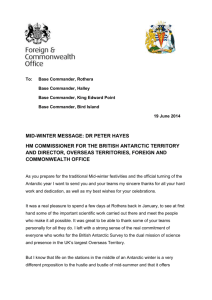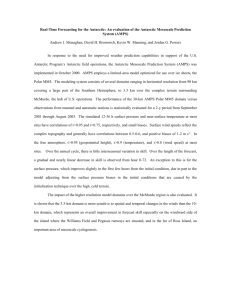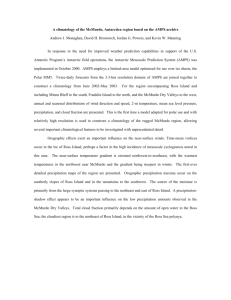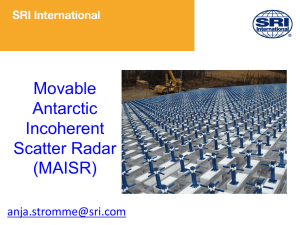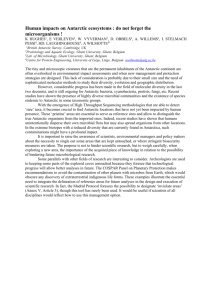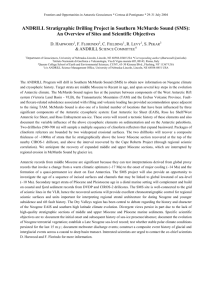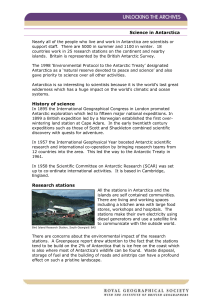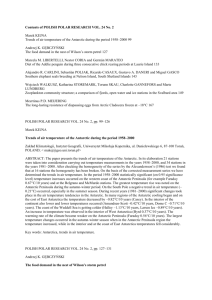Abstract - University of Wisconsin–Madison
advertisement
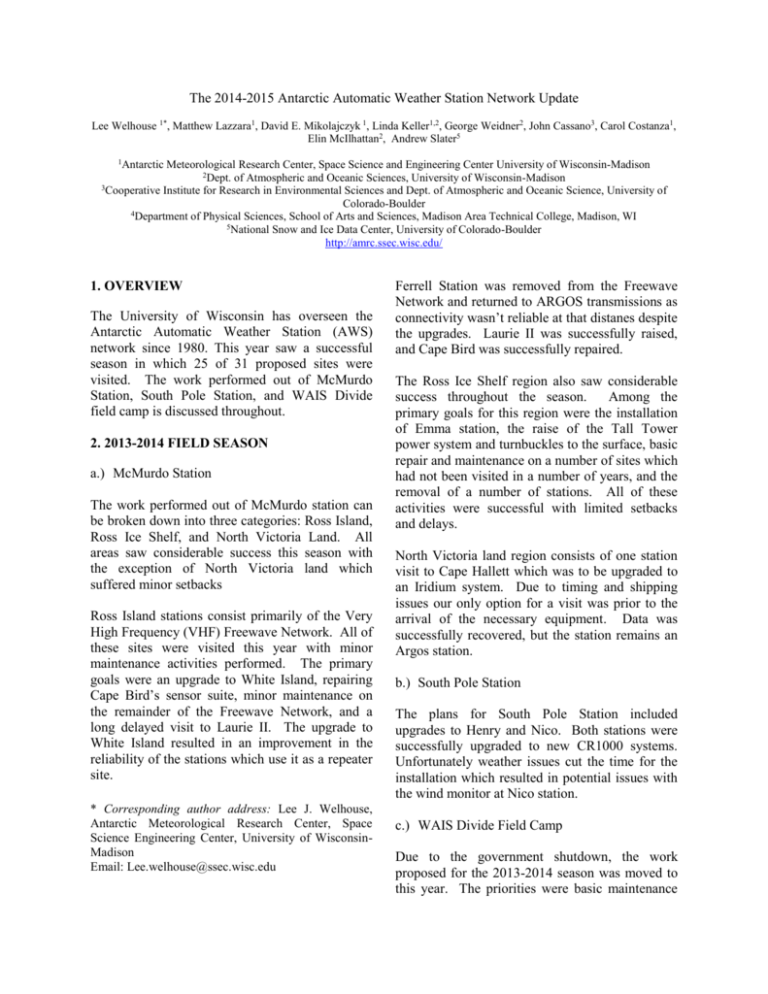
The 2014-2015 Antarctic Automatic Weather Station Network Update Lee Welhouse 1*, Matthew Lazzara1, David E. Mikolajczyk 1, Linda Keller1,2, George Weidner2, John Cassano3, Carol Costanza1, Elin McIlhattan2, Andrew Slater5 1Antarctic Meteorological Research Center, Space Science and Engineering Center University of Wisconsin-Madison 2Dept. of Atmospheric and Oceanic Sciences, University of Wisconsin-Madison 3Cooperative Institute for Research in Environmental Sciences and Dept. of Atmospheric and Oceanic Science, University of Colorado-Boulder 4Department of Physical Sciences, School of Arts and Sciences, Madison Area Technical College, Madison, WI 5National Snow and Ice Data Center, University of Colorado-Boulder http://amrc.ssec.wisc.edu/ 1. OVERVIEW The University of Wisconsin has overseen the Antarctic Automatic Weather Station (AWS) network since 1980. This year saw a successful season in which 25 of 31 proposed sites were visited. The work performed out of McMurdo Station, South Pole Station, and WAIS Divide field camp is discussed throughout. 2. 2013-2014 FIELD SEASON a.) McMurdo Station The work performed out of McMurdo station can be broken down into three categories: Ross Island, Ross Ice Shelf, and North Victoria Land. All areas saw considerable success this season with the exception of North Victoria land which suffered minor setbacks Ross Island stations consist primarily of the Very High Frequency (VHF) Freewave Network. All of these sites were visited this year with minor maintenance activities performed. The primary goals were an upgrade to White Island, repairing Cape Bird’s sensor suite, minor maintenance on the remainder of the Freewave Network, and a long delayed visit to Laurie II. The upgrade to White Island resulted in an improvement in the reliability of the stations which use it as a repeater site. * Corresponding author address: Lee J. Welhouse, Antarctic Meteorological Research Center, Space Science Engineering Center, University of WisconsinMadison Email: Lee.welhouse@ssec.wisc.edu Ferrell Station was removed from the Freewave Network and returned to ARGOS transmissions as connectivity wasn’t reliable at that distanes despite the upgrades. Laurie II was successfully raised, and Cape Bird was successfully repaired. The Ross Ice Shelf region also saw considerable success throughout the season. Among the primary goals for this region were the installation of Emma station, the raise of the Tall Tower power system and turnbuckles to the surface, basic repair and maintenance on a number of sites which had not been visited in a number of years, and the removal of a number of stations. All of these activities were successful with limited setbacks and delays. North Victoria land region consists of one station visit to Cape Hallett which was to be upgraded to an Iridium system. Due to timing and shipping issues our only option for a visit was prior to the arrival of the necessary equipment. Data was successfully recovered, but the station remains an Argos station. b.) South Pole Station The plans for South Pole Station included upgrades to Henry and Nico. Both stations were successfully upgraded to new CR1000 systems. Unfortunately weather issues cut the time for the installation which resulted in potential issues with the wind monitor at Nico station. c.) WAIS Divide Field Camp Due to the government shutdown, the work proposed for the 2013-2014 season was moved to this year. The priorities were basic maintenance on much of the West Antarctic network, as well as installation of two new sites named Austin and Kathie. Unfortunately due to weather issues, our time in West Antarctica was cut severely short. This resulted in only 3 stations being visited: Kominko-Slade, Theresa, and Elizabeth. All were successfully raised or upgraded, but this leaves a significant amount of West Antarctic work to do in the next season. 3. ACKNOWLEDGEMENTS This material is based upon the work supported by the National Science Foundation, grant numbers ANT-0944018 and ANT-1245663. Figure 1. 2015 map of University of Wisconsin Antarctic Automatic Weather Stations.
